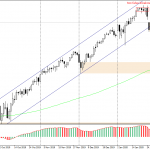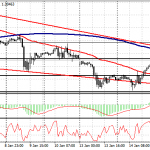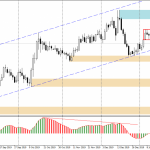5 trading tips for this treacherous climate
Developed markets around the world are looking pricey by multiple measures, with the U.S., in particular, relentlessly banging out record highs DJIA, -2.13% SPX, -2.45% At the same time, negative interest rates are a wicked curveball that nobody can seem to figure out. Even the “smart money”—especially the “smart money”—can’t get it right.
No doubt, it’s a treacherous climate for trading stocks.
But it doesn’t have to be. In fact, it can work to your advantage. Now more than ever, retail investors are positioned for success thanks to the flood of accessible information. Unfortunately, very few understand how to harness the power.
With that in mind, here are five tips that should help up your trading game:
Keep the cash register ringing
Negative interest rates are screwing with everything. Anyone who says they know the outcome of all of this is lying. It’s unprecedented, and nobody has a clue. Best you can do is just get paid. Yield and carry is crucially important. A so-called carry is typically defined as the cost or return to maintain a trade. In currencies, for example, investors borrow in one currency with relatively low interest rates then trade for a currency with higher rates, then collect the difference for a positive carry.
Businesses are being charged about 30 basis points on one-year cash in Swiss francs CHFUSD, -0.2973% euros EURUSD, -0.2486% and yen USDJPY, +0.21% This is essentially a tax on trade, and suppliers are passing on holding fees to buyers. It’s causing delays, worries and issues with the supply chain, and corporates are providing a tsunami of money that’s constantly seeking yield and carry.
You don’t want to be caught on the wrong side of this trend or you will get murdered. Brexit was a classic example. If you went short yield stocks in the FTSE 100 UKX, -1.19% on the morning after Brexit, or you were panicked out of a trade, then you know exactly what I’m talking about.
Look for smarter ways to represent your trade ideas
Right now, call and put option spreads are much better ways to play single-stock catalysts than simply owning or betting that a stock will fall in value.
As always, there needs to be a marginal benefit in putting on an options trade. If you are fundamentally bullish on a particular stock’s earnings/catalysts, check those out-of-the-money and at-the-money call spreads.
For a more detailed explanation of call and put option spread strategies, read “An options strategy that helps returns fly high.”
Analysts have gone to sleep in this market (especially in Asia-Pacific), and they’re being far too risk averse. There are some great stories out there where analyst expectations are wildly off. Using this approach will help you capitalize on that.
Trade less often
Hold, hold, hold those positions! Don’t be scared out of a stock if it initially goes against you. I’m seeing more than ever across our portfolios examples of positions that come good once the initial noise dissipates. And there is a lot of noise in this market, especially at the macro level. Keep your resolve. Prices in this market tend to always come back to where they were yesterday or a week before (also known as reversion to the mean in statistic terms).
Don’t panic and be patient at all times. If you can’t manage that, just walk away from your screen for a day or two. You will be surprised at how resilient your ideas are and how strong so-called mean reversion is in this market. Momentum is seriously lacking right now in pretty much everything. Bottom line: the guy who trades less in this market tends to win more.
Read: Former Goldman trader schools the muppets.
In the currency markets, yesterday’s havens are no longer. To fund your shorter-term trades, your longer-term positioning must be set up to JUST GET PAID! Then you have optionality to use some or all of the income generated to reinvest into one-to-three month volatility/premium (where it makes sense) to ratchet your trading accounts and returns.
Bet against the big hedge-fund cheerleaders
These guys really don’t have more of a clue than most people on the street. Billions of dollars of infrastructure and their Ivy League workforce aren’t giving them an edge at all. The industry is now totally commoditized, and you can do it as good if not better yourself. The composite Hedge Fund Return Index is up a mere 3% in the last 36 months. Pathetic. When hedge-fund mouthpieces come out in the media and act like cheerleaders pushing their positions, just sit back, wait and bet against them. You’d have been right more often than they have been in the past few years.
I believe this will continue due to reflexivity and correlation. There is too much money chasing the same return and the same lame one-dimensional stories. Hedge-fund cheerleaders create a halo effect around a trade and all push the same position, but then mean reversion occurs soon after (sooner than people expect). You should be seeking to take the other side of these stories these guys pedal to the masses as their “panacea” trades.
Don’t be a hero!
In these environments, historically, we get sideways trending markets for long periods. Rare are the significant breaks in either direction. Just don’t be a hero and get too bullish or too bearish on U.S. equities. Understand that it’s extremely difficult to have a real edge in markets like these. The sooner you admit you don’t have one right now the better for you it will be. You will become more humble and more nimble. Your aim should be to take coin out of the market (and not out of you). Most investors tend to be too dogmatic in their thesis and unwilling to be more opportunistic.
Anton Kreil, a former Goldman Sachs trader, is the managing partner of the Institute of Trading and Portfolio Management. He will be touring the U.S. and Canada in September to teach retail traders how to supplement their pensions by getting an edge in the financial markets.



